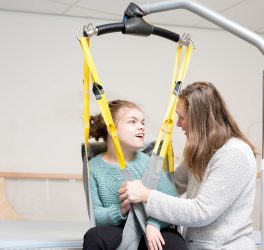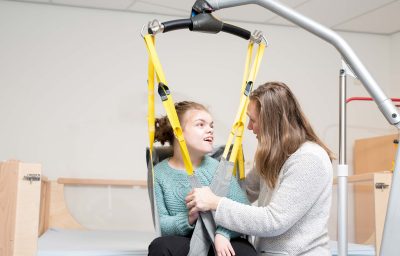
Two groundbreaking studies at the UC Davis MIND Institute provide clues about possible types of autism linked to brain structure, including size and white matter growth.
The research is based on brain scans taken over many years as part of the Autism Phenome Project (APP) and Girls with Autism, Imaging of Neurodevelopment (GAIN) studies. It shows the value of longitudinal studies that follow the same children from diagnosis into adolescence.
“There is no other single site data set like ours anywhere,” said Christine Wu Nordahl, associate professor in the Department of Psychiatry and Behavioral Sciences, MIND Institute faculty member and co-senior author on both papers. “In one of the studies we have over 1,000 MRI scans from 400 kids, which is unheard of. It’s been 15 years of work to get here.”
In the first study, published in Biological Psychiatry, the researchers used magnetic resonance imaging (MRI) to track brain size (volume) in 294 children with autism and 135 children without autism between the ages of 3 and 12.
In children with autism, they found evidence of larger brain size relative to height – or disproportionate megalencephaly – a subtype that has been linked to higher rates of intellectual disability and poorer overall prognosis.
Previous cross-sectional research had found that children with autism have larger brains at early ages, but no evidence of larger brains in later childhood. The widely accepted theory is that these brains “normalized” or shrank as the children grew up.
The MIND Institute study found that wasn’t the case. The children who had bigger brains at age 3 still had bigger brains at age 12. Why? Unlike most research, which studies different individuals at different time points, this research studied the same children longitudinally, or over time.
Also, unlike most other studies, this one includes children with significant intellectual disabilities. These were the children who tended to have the “big brain” form of autism.
David Amaral, co-senior author on both studies, suggested that the difference between this and previous research was that children with intellectual disability were left out of previous cross-sectional studies focused on older children.
“Bigger brain size in autism has been linked to lower IQ, and children with intellectual disabilities are harder to scan as they get older,” said Amaral, a distinguished professor of psychiatry and behavioral sciences and MIND Institute faculty member. “It’s a matter of sampling bias and the previous “dogma” appears to be an artefact of who got scanned when,” he explained.
Children under age 5 can be scanned while they’re asleep, but Nordahl and her team have created unique, innovative protocols that allow researchers to more easily scan older children with intellectual disabilities while they’re awake.
It’s so critical that we include those aspects of the autism spectrum that most impact quality of life, such as intellectual disability, anxiety and verbal functioning. It’s important to capture everyone who has autism, not just the ones who are easiest to get images from.”








